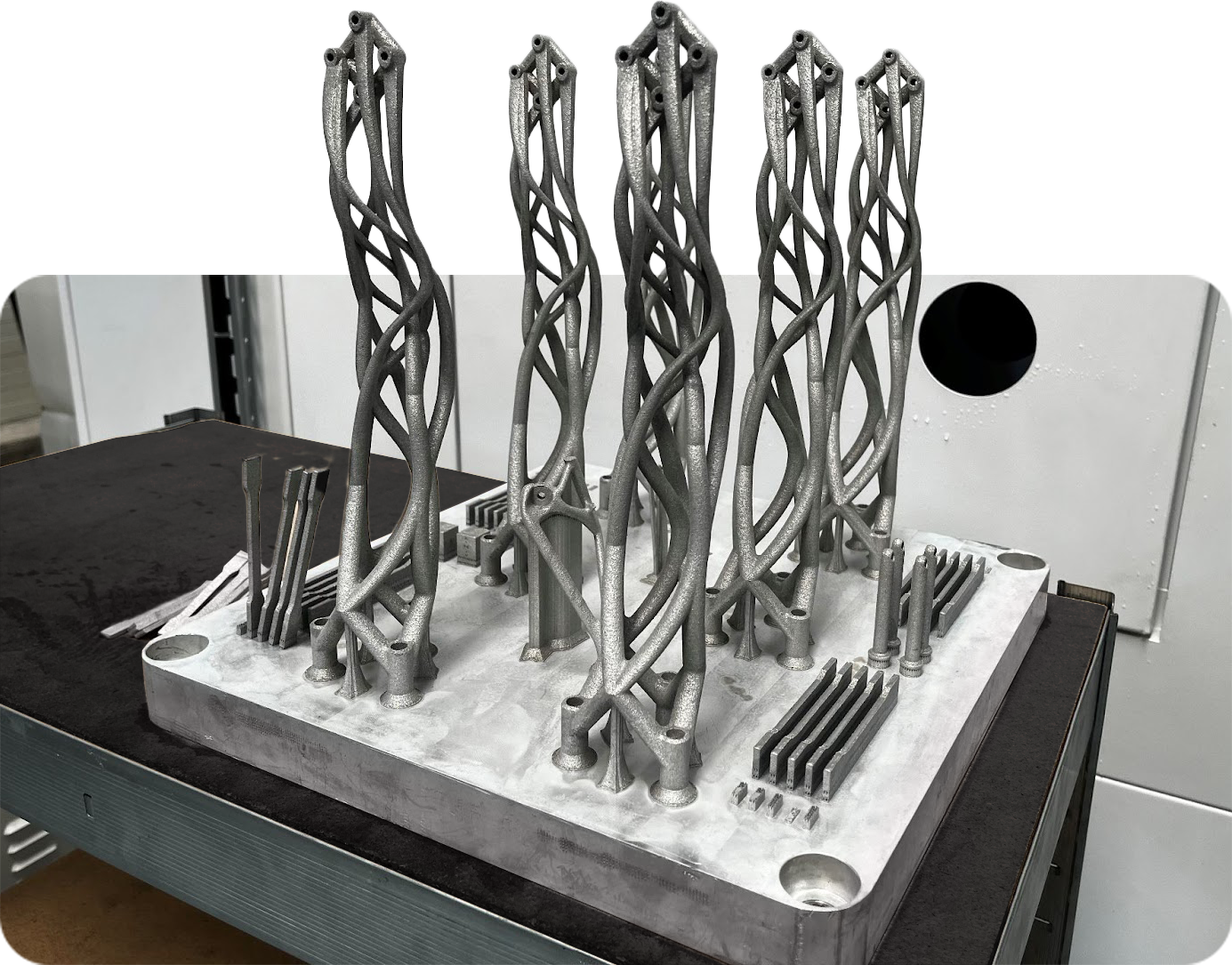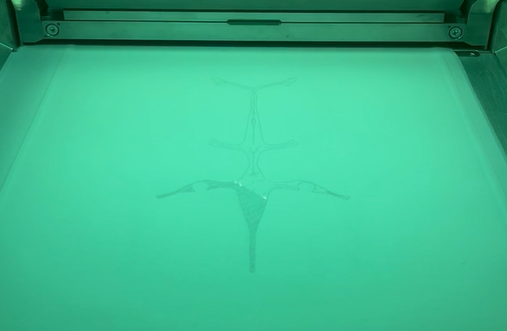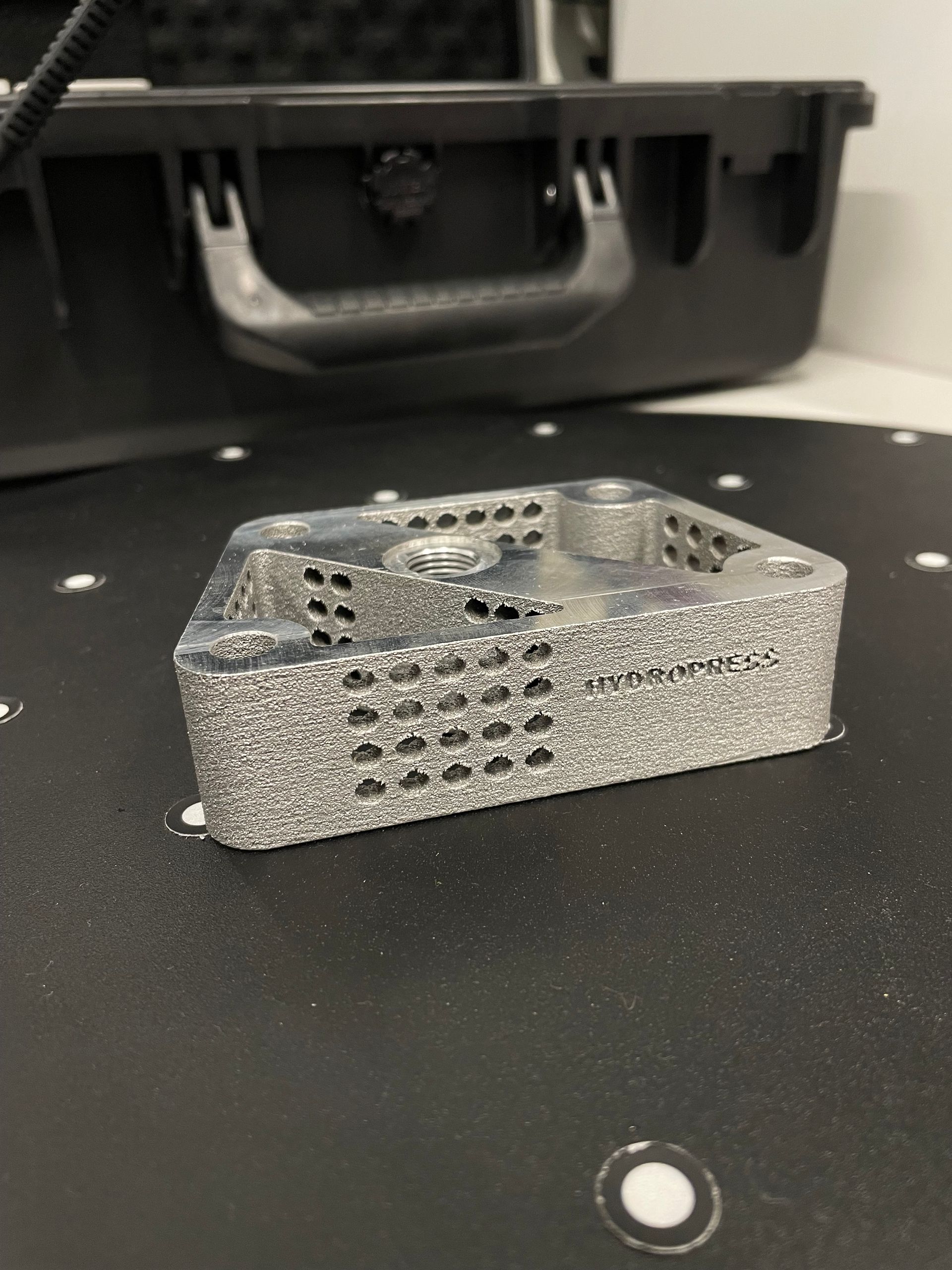Innovations in 3D Printing
Increased design freedom with metal 3D printing
Metal 3D printing allows for the production of geometries that are difficult or even impossible to produce using other methods, which provides greater freedom in designing innovative solutions.
EOS M400
Specialised large-scale metal 3D printing machine
Materials
The use of high-strength materials
in 3D printing
The use of high-strength materials allows the application of printed elements in structures that carry heavy loads. The strength of printed parts is comparable to, and can even be higher than, those manufactured using traditional methods (e.g. casting, CNC), while reducing weight by up to 80%, thanks to volume optimization.
Available materials include:
► See all materials
Design Requirements
How to prepare a project for printing?
Characteristics
Maximum volume
400mm x 400mm x 400mm
Tolerances
Best tolerances - <100mm: ±0.2mm, <200mm: ±0.3mm, <300mm: ±0.4mm, 300-400mm: ±0.4-0.5mm
Layer height
Depends on the material
Aluminium AISi10Mg - 0,09mm
Surface finish
The raw print has a high roughness, which can be leveled by sandblasting or machining.
Printed elements may have coatings applied and may be subject to chemical processes, such as nickel plating.






